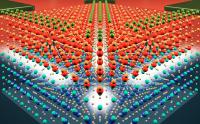A team of researchers at the University of Pittsburgh has developed a single-electron transistor called SketchSET, or sketch-based single-electron transistor to help build enhanced computer memories, electronic materials, and the quantum computer parts.
The research paper has appeared in Nature Nanotechnology and explains that the computer’s core component, an island measuring 1.5nm in diameter, can function with just one or two electrons. This feature would render the transistor applicable in ultradense memories and quantum processors. These devices could help address complicated issues.
 Pitt's SketchSET
Pitt's SketchSET
The nano-scale island could also function as a synthetic atom to create new artificial electronic materials including superconductors, says team leader Jeremy Levy, a professor of physics and astronomy in the School of Arts and Sciences. Levy collaborated with lead author and physics and astronomy graduate student Guanglei Cheng, besides physics and astronomy researchers Feng Bi, Daniela Bogorin, and Cheng Cen. The Pitt team collaborated with a research team from the University of Wisconsin led by materials science and engineering professor Chang-Beom Eom, and research associates Chung Wun Bark, Jae-Wan Park, and Chad Folkman.
A sharp conducting probe of an atomic force microscope was used to create nano-sized wires and transistors at the interface of a crystal of strontium titanate and a 1.2nm thick lanthanum aluminate layer. The devices can later be erased, allowing the interface to be reused. The SketchSET comprises an island structure that could hold zero, one or two electrons. This numbers causes specific conductive traits. Wires protruding from the transistor deliver more electrons over the island.
The single-electron device is sensitive to an electric charge and exhibits ferroelectricity, due to which the transistor serves as a solid-state memory. The ferroelectric state can also monitor the number of electrons on the island when there is no external power source. A computer memory that was based on this characteristic could retain data when the processor was shut down. It could also prove susceptible to nano-scale pressure changes like a nanoscale charge or force sensor.